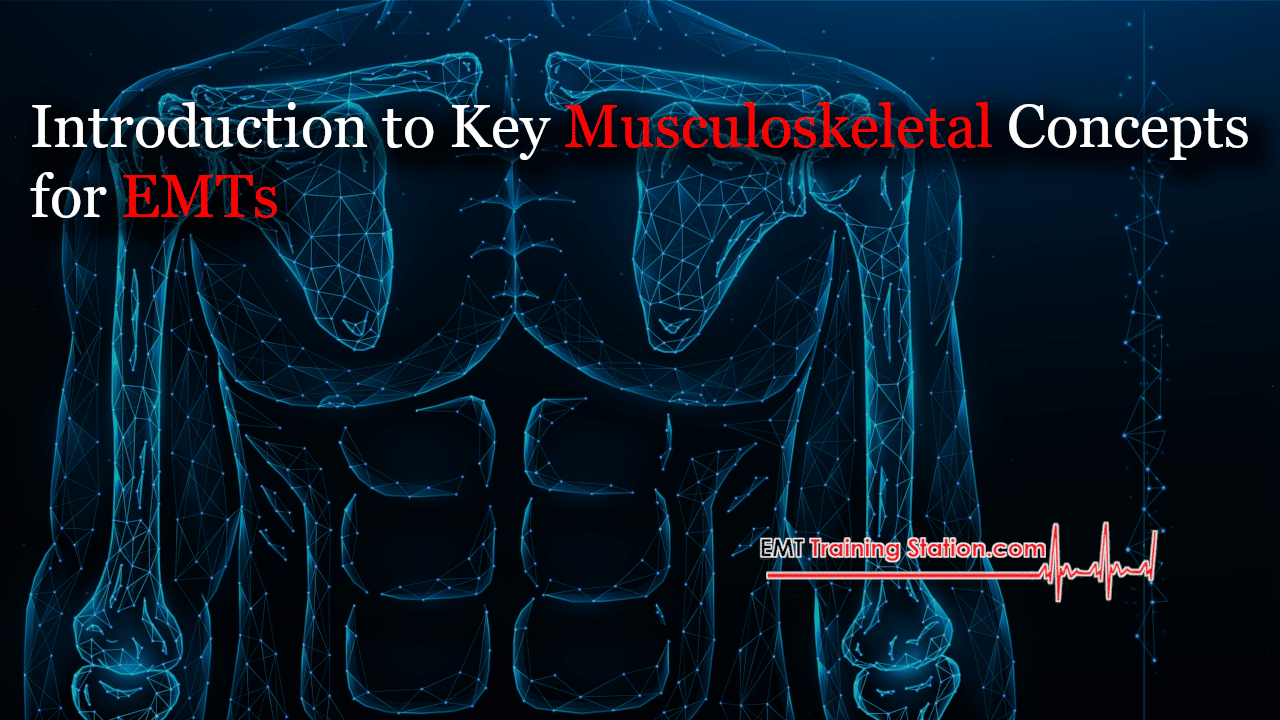This article is for informational purposes only and is NOT a replacement for proper education and training.
Table of Contents
The human body, a marvel of biological engineering, is made up of several intricate systems working in harmony to enable life as we know it. The musculoskeletal system is one such essential system, a complicated network of bones, muscles, tendons, ligaments, and joints that collaborate to permit movement and safeguard vital organs. Understanding the subtleties of this system is crucial for emergency medical technicians (EMTs). Since musculoskeletal injuries are among the most frequent emergencies they encounter in the field, it gives them the knowledge they need to evaluate, manage, and possibly mitigate their effects.
In addition to facilitating movement and protecting organs, the musculoskeletal system serves as the body’s scaffolding. Additionally, it helps with posture maintenance, mineral storage, and blood cell production. As a result, any illness or injury to this system has the potential to have a significant impact on a person’s general health and quality of life. This emphasizes the crucial role EMTs play in providing immediate care for musculoskeletal emergencies and the importance of this system’s comprehensive understanding as a key component of their training.
EMTs frequently serve as the first point of medical contact for people with musculoskeletal injuries brought on by mishaps, falls, or other traumatic events because they are first responders. They also deal with situations where a musculoskeletal disorder that already exists may be the source of sudden symptoms. Their capacity to correctly assess the situation, deliver prompt and appropriate care, and communicate necessary information to the next level of healthcare is largely dependent on their knowledge of the musculoskeletal system.
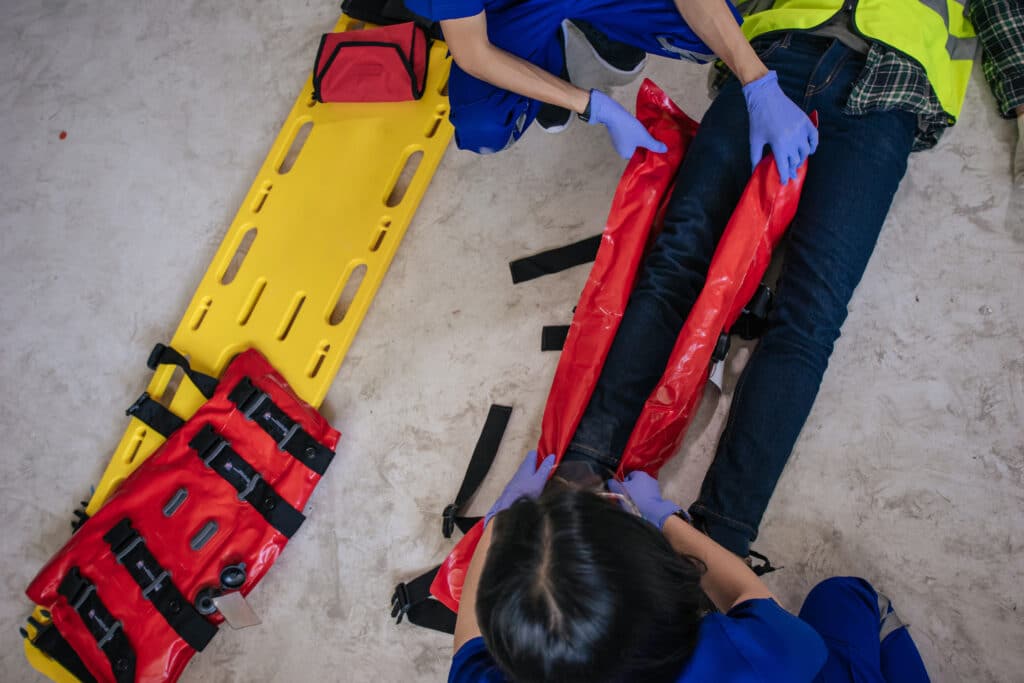
In this article, we’ll examine the crucial elements of the musculoskeletal system that every EMT needs to be knowledgeable about. The musculoskeletal system’s basic anatomy will be covered first, along with the structure and purposes of each of its main parts, which include the bones, muscles, joints, tendons, and ligaments. Then, we’ll talk about common diseases and injuries that can affect these parts, including, among others, fractures, sprains, strains, dislocations, osteoporosis, arthritis, and muscular dystrophies.
We want to make the link between this knowledge and how it can be used in emergency medical services, not just give a theoretical understanding. To that end, we will shed light on how the typical signs and symptoms of these injuries and conditions may present in a prehospital setting and the importance of recognizing these cues for an accurate and timely diagnosis.
Finally, we will focus on the EMT’s role in responding to musculoskeletal emergencies, emphasizing the key steps in patient assessment, the basic first aid and emergency treatments that EMTs can provide, and the importance of a rapid response to prevent complications.
Understanding the musculoskeletal system is a vast and complex subject, but it’s an essential one for EMTs. Whether you’re an aspiring EMT looking to grasp the basics, a practicing EMT aiming to refresh your knowledge, or simply interested in the fascinating world of emergency medical services, we hope this article will serve as a valuable resource. As we explore the essential musculoskeletal ideas for EMTs, let’s start this journey of learning and discovery together.
Key Musculoskeletal Concepts for EMTs: Understanding the Basic Anatomy
We start our exploration of the musculoskeletal system by learning about its fundamental anatomy. This network of bones, muscles, joints, tendons, and ligaments forms the very structure of our bodies, supporting movement, protecting internal organs, and serving several other vital functions.
Let’s start by thinking about bones, the rigid structures that make up the framework of the body. There are 206 bones in the human body, each of which is carefully constructed to offer structural support and protection. For instance, the rib cage protects the heart and lungs, the skull shields the brain, and the vertebrae encase the spinal cord. Additionally, bones contain bone marrow, which is in charge of producing blood cells, as well as important minerals like calcium and phosphorus.
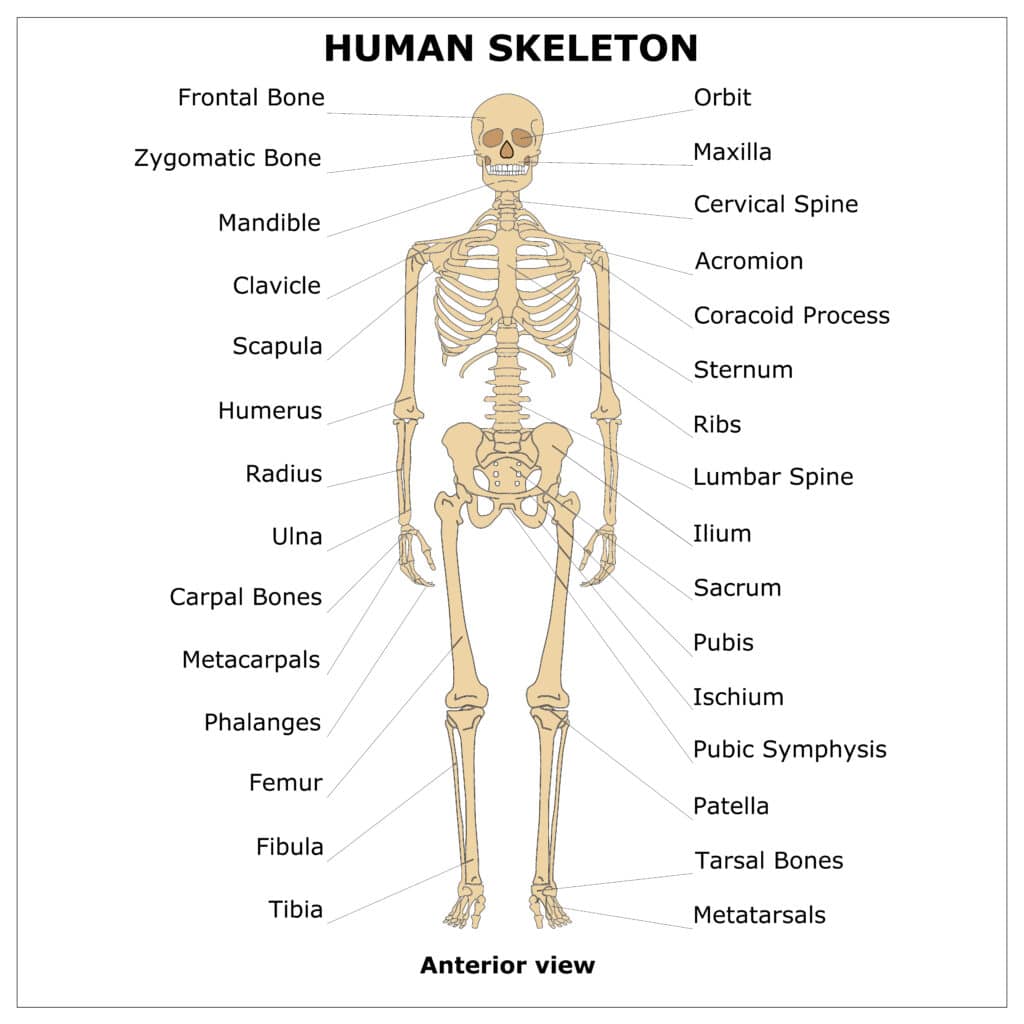
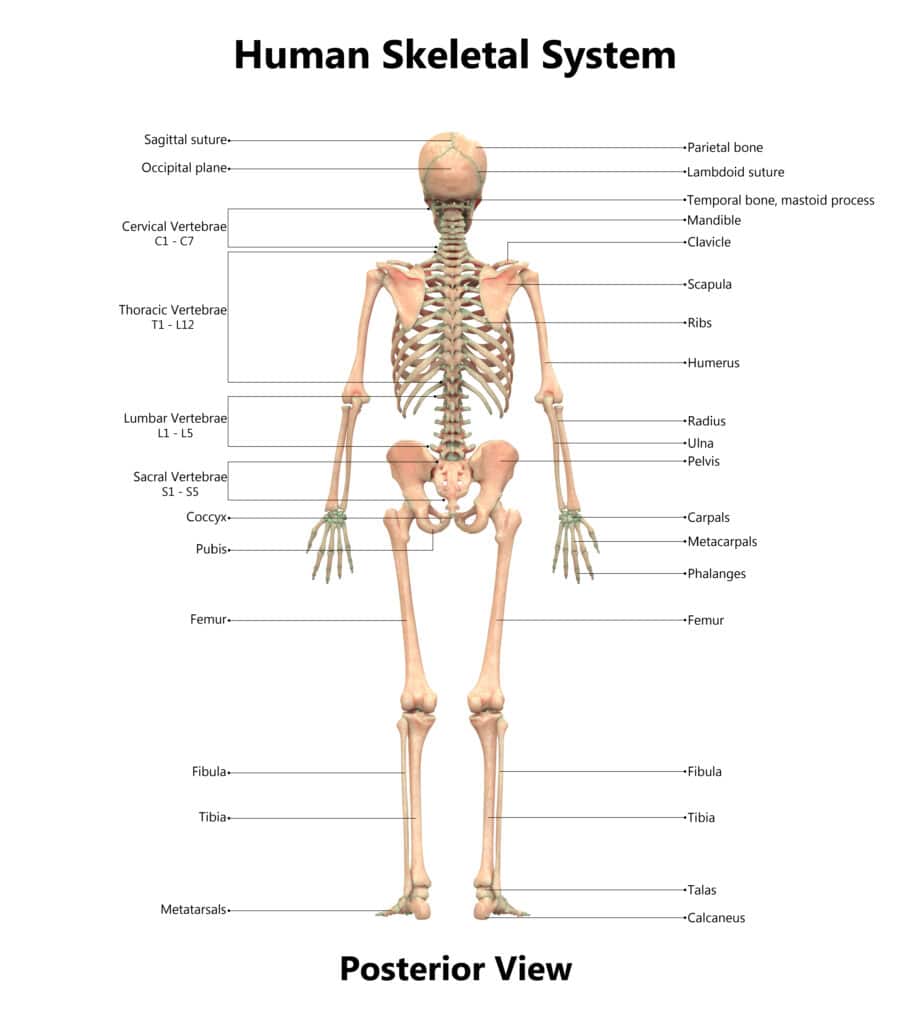
The points where two or more bones meet are joints, which allow for movement and flexibility. They can be of different types, such as ball-and-socket joints like the shoulder and hip that allow movement in all directions or hinge joints like the elbow that only allow movement in one plane. Joint injuries are frequent, and EMTs frequently treat sprains and dislocations.
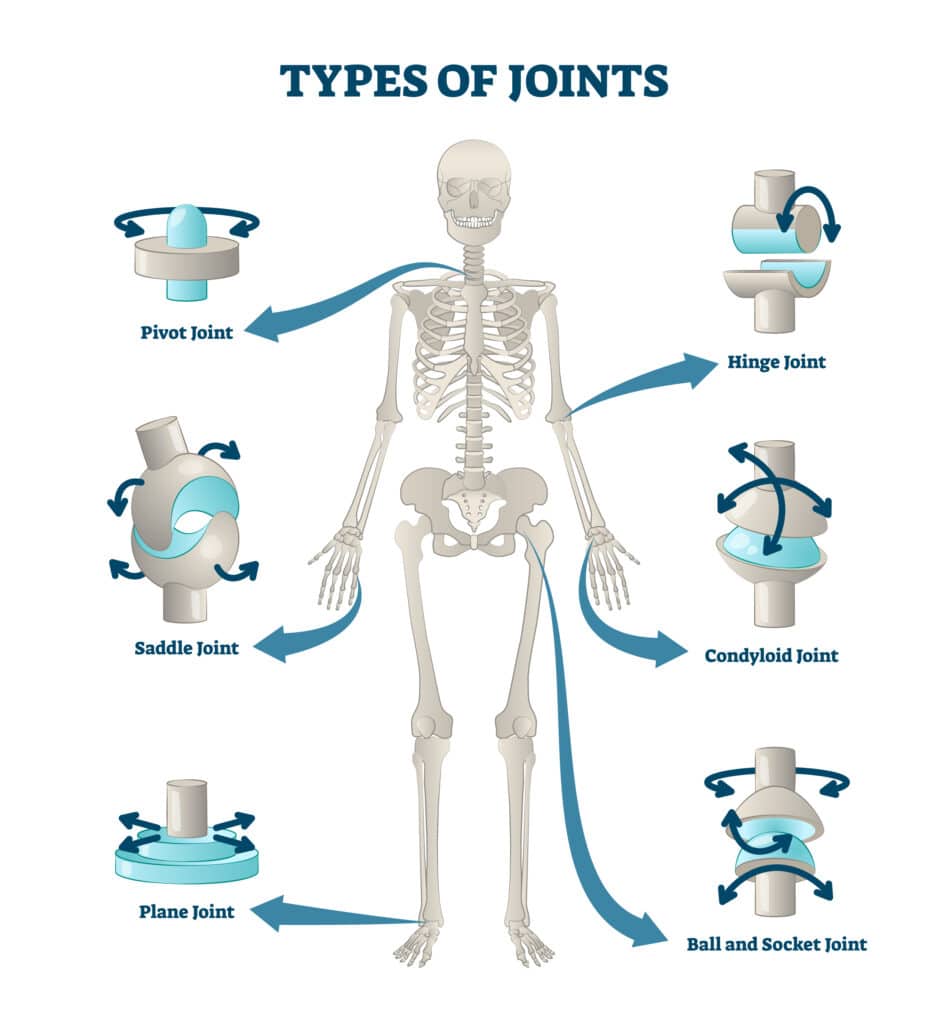
The body’s movers, the muscles, are connected to these bones. From the blink of an eye to the stride of a run, muscles are the driving force behind all bodily movements. By pulling on the bones to which they are attached, they can contract and relax, causing movement. More than 600 muscles make up the human body, which is divided into skeletal, cardiac, and smooth muscles. Skeletal muscles, which enable voluntary movement, will be the main focus of your work as EMTs.
Connective tissues like ligaments and tendons play important roles in the musculoskeletal system. Tendons connect muscle to bone and are strong, fibrous cords that help with movement. On the other hand, ligaments link one bone to another, providing stability and limiting excessive movement that might cause harm. Tendonitis and sprains are examples of injuries to these tissues that can result in excruciating pain and disability.
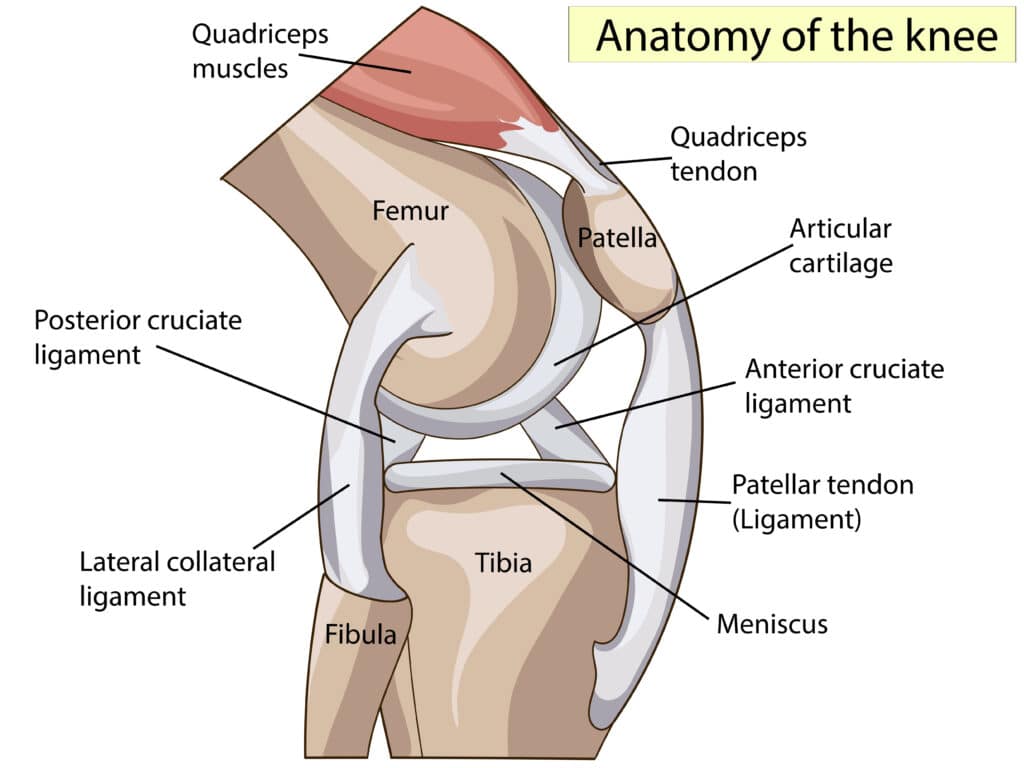
In addition to these major components, we must mention the cartilage, a type of connective tissue that provides a smooth, lubricated surface for joint movement and acts as a shock absorber to reduce the impact of physical activities on the joints.
As you can see, each component of the musculoskeletal system plays a unique role in maintaining our body’s structure and function. Understanding these roles is fundamental to identifying and treating the common disorders and injuries that can affect these components. From fractures that break the continuity of bones to sprains that stretch or tear ligaments, to strains that affect muscles and tendons, EMTs must be well-equipped to handle a range of musculoskeletal emergencies.
In the following installment of this article, we will delve deeper into these frequent wounds and illnesses, going over their typical symptoms and signs as well as how they might manifest in a prehospital setting. Keep in mind that every new piece of information you acquire about the musculoskeletal system will improve your capacity to work as an efficient and qualified EMT as we move forward. Understanding this complex system is important for more than just acing exams; it’s also important for giving your patients the best care possible when they need it most.
Key Musculoskeletal Concepts for EMTs: Common Musculoskeletal Injuries and Conditions
Using our knowledge of the fundamental musculoskeletal system’s anatomy as a foundation, we will now discuss the various injuries and illnesses that EMTs frequently deal with on the job. A firm understanding of these issues is essential for efficient emergency response, from fractures and dislocations to chronic conditions like osteoporosis and arthritis.
A common injury is a fracture, which is a break in the continuity of a bone. Traumatic events like falls and car accidents are particularly likely to cause fractures. Different categories of fractures exist, including simple (a single break) and comminuted (multiple fragments), as well as open (where the bone punctures the skin) and closed. The presence of pain, edema, and deformity are frequent symptoms. In your capacity as an EMT, your duties would include immobilizing the wound, treating pain, and transporting the patient for additional medical care.
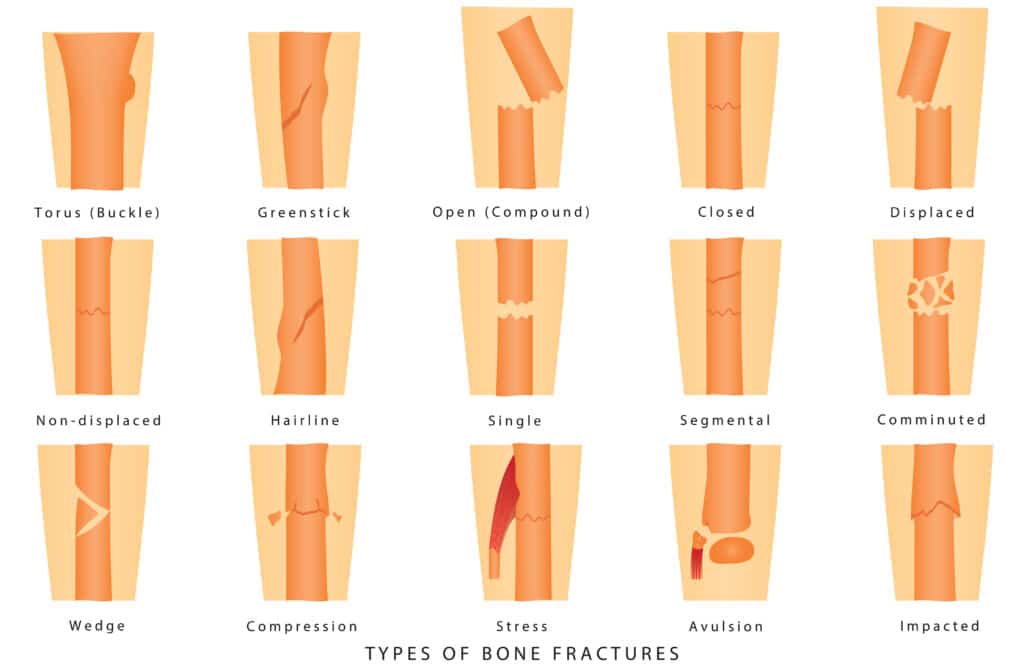
Even though sprains and strains are frequently less serious than fractures, they can still result in severe pain and impairment. Ligaments can be stretched or torn during sprains, which typically affect joints like the ankle or wrist. Strains commonly affect the muscles or tendons and can happen in the back or hamstrings. Both conditions can result from overuse or recent trauma, and their symptoms include pain, swelling, and difficulty using the affected area. EMTs can offer initial care by suggesting RICE (rest, ice, compression, and elevation) and arranging transportation to the hospital if required.
When the ends of bones are pushed out of their normal positions in a joint, which frequently happens as a result of falls or blows, dislocations happen. They demand urgent medical care because they produce excruciating pain and an obvious deformity. In your role as an EMT, you would concentrate on immobilizing the area and offering quick transportation for definitive care.
In terms of chronic diseases, osteoporosis is one that causes brittle, fracture-prone bones as a result of a decline in bone density. EMTs should be aware of this condition even though it is not usually an urgent situation, especially when caring for elderly patients who might have fractures from small falls.
Another prevalent condition is arthritis, which causes the joints to swell, causing pain, stiffness, and a loss of range of motion as symptoms. Patients might need emergency medical attention in certain situations, such as severe gout attacks or septic arthritis.
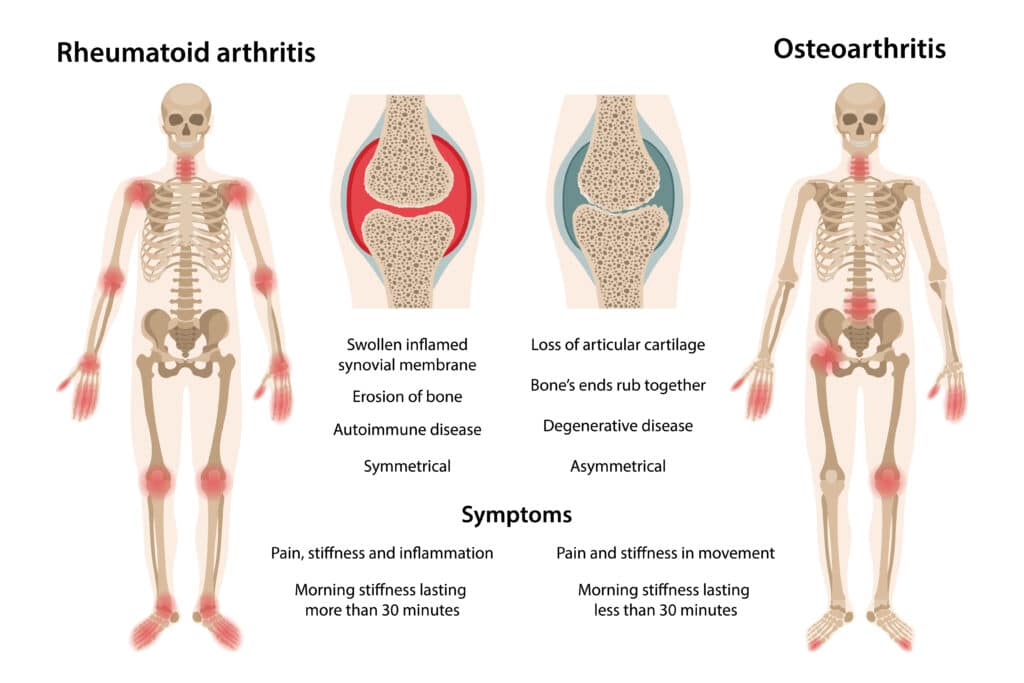
Finally, a group of genetic diseases known as muscular dystrophies cause progressive muscle weakness. EMTs won’t typically diagnose these conditions, but they should be aware of any complications that might require emergency care, like trouble breathing or swallowing.
We will discuss the EMT’s critical contribution to the treatment of these musculoskeletal emergencies in the following installment of this article. In this article, we’ll go over the crucial steps in patient assessment, the fundamental first aid and emergency care that EMTs can offer, and the significance of a prompt response in averting further complications.
Keep in mind that your knowledge of these typical musculoskeletal disorders and injuries goes beyond improving your knowledge as an EMT; it also has a direct impact on the level of care you offer your patients. Every new bit of knowledge you acquire could mean the difference between a quick fix and a long-term fix, between a straightforward transport and a life saved. So, continue to learn and develop. Your patients will appreciate it.
Key Musculoskeletal Concepts for EMTs: Assessment and Response to Musculoskeletal Emergencies
As we continue our examination of the essential musculoskeletal concepts for EMTs, we will now examine a crucial aspect of emergency medical care: the evaluation and treatment of musculoskeletal emergencies. From initial assessment to basic first aid, an EMT’s approach can have a substantial impact on the patient’s outcome.
The initial assessment of a patient is a crucial part of any EMT’s job. This process begins as soon as you arrive on scene and continues until the patient is transferred to the next level of care. It is essential to look for obvious signs of musculoskeletal injuries, such as deformities, swelling, and discoloration. This is known as DCAP-BTLS, or deformities, contusions, abrasions, punctures, burns, tenderness, lacerations, or swelling. In addition, assessing the patient’s pain level, range of motion, and any signs of circulatory or nerve damage can provide valuable information regarding the severity and location of the injury.
EMTs must determine the best course of action for the patient following this initial evaluation. Immobilization is a crucial step for many musculoskeletal injuries. This may involve using splints, slings, or vacuum splints to stabilize the injured area and prevent further damage. Remember that the purpose of immobilization is not only to reduce pain, but also to reduce the risk of further injury to the musculoskeletal system and surrounding structures.
Pain management is another important aspect of an EMT’s response in musculoskeletal emergencies. This may involve administering approved pain medications, assisting with prescribed medications, or simply providing reassurance and distraction to assist the patient in coping with pain.
In some instances, EMTs may be required to perform more sophisticated interventions. This may involve realigning a dislocated joint or applying traction splints to certain types of fractures. However, these interventions should only be performed if absolutely necessary and only if the EMT is trained and authorized to do so.
After receiving initial care, the patient must be transported to a medical facility for further evaluation and treatment. It is essential to continuously reevaluate the patient during transport, observing for any changes in their condition and managing any complications that may arise.
Finally, it’s crucial to communicate effectively with other healthcare providers. This will involve providing a clear and concise handoff report to the emergency department staff as well as accurately documenting the incident and care rendered for future reference.
Your role as an EMT responding to musculoskeletal emergencies is complex. You are a first responder, a care provider, a patient advocate, and a vital link in the healthcare delivery chain. Your knowledge of the musculoskeletal system and the injuries and conditions that can affect it is essential for effectively carrying out these responsibilities.
In the concluding segment of this article, we will review the significance of understanding the musculoskeletal system for EMTs and encourage continued study and training in this area. The world of emergency medical services is constantly evolving, and as EMTs, it’s essential to keep learning and growing to provide the best possible care to our patients.
Key Musculoskeletal Concepts for EMTs: The Importance of Ongoing Learning and Training
As we conclude this article on key musculoskeletal concepts for EMTs, we reiterate the importance of ongoing learning and training in this area. The musculoskeletal system is complex and the range of injuries and conditions that can affect it is vast. Therefore, a solid understanding of this system is not just a ‘nice-to-have’ but an essential tool in an EMT’s toolkit.
We’ve explored the basic anatomy of the musculoskeletal system, delved into common injuries and conditions, and discussed the vital role of EMTs in assessing and responding to these emergencies. However, this is just the tip of the iceberg. The field of emergency medical services is constantly evolving, with new research, techniques, and technologies emerging all the time. Therefore, the learning journey for EMTs never truly ends.
Continuing education can take many forms. Formal training courses and workshops are excellent ways to refresh your knowledge and learn new skills. These can provide hands-on practice and allow for direct interaction with instructors and peers. In addition, there are numerous online resources available, including webinars, online courses, and educational websites dedicated to EMT training.
Keeping up-to-date with the most recent research in emergency medical care is an important aspect of lifelong learning. Reading medical journals, attending conferences, and participating in professional forums can expose you to new ideas and methods and keep you abreast of the most recent advancements in the field.
Additionally, never undervalue the importance of experience. Each patient you treat and each phone call you answer is a learning opportunity. Consider your past experiences, discuss difficult cases with your coworkers, and solicit feedback whenever possible. This “on-the-job” learning is invaluable and can provide insights that are not always apparent in the classroom.
Remember that learning does not consist solely of acquiring knowledge. It’s also about adopting the proper mental attitude. As an EMT, you will frequently be placed in situations where quick thinking and decision-making are essential. Developing traits such as resiliency, adaptability, and critical thinking can improve your performance and enable you to provide the highest quality care to your patients.
In conclusion, a comprehensive understanding of the musculoskeletal system and its associated injuries and disorders is a fundamental component of EMT training. Nonetheless, this information is not static. It requires constant revision, improvement, and expansion. Therefore, continue to educate yourself, to challenge yourself, and to practice. Your dedication to continuing education not only improves your abilities as an EMT but can also result in better patient outcomes. After all, at the core of every EMT’s job is the desire to assist others, and there’s no better way to do so than by pursuing excellence.
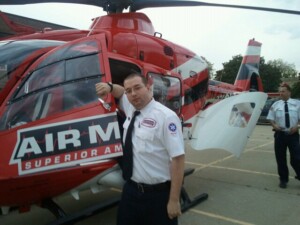
Michael
Hey there! It's so great to meet you! My name is Mike, and I am thrilled to be able to share my extensive EMS experience with you. I am currently working as an EMT in Tucson and am also an EMT instructor at Pima Community College. I am passionate about teaching future first responders, and I created this site specifically to assist anyone interested in pursuing a career in EMS.
It's possible that you are here because you're considering becoming an EMT, or maybe you are already one. Throughout my career, I have tested out countless pieces of EMT-related gear and equipment, and I want to help guide you in making smart decisions when it comes to selecting the best gear for your needs.
I am here to offer my support, so feel free to reach out if there is anything you need. Let's work together to make sure you have the tools you need to excel in this rewarding field!
Share this:
- Click to share on Facebook (Opens in new window) Facebook
- Click to share on LinkedIn (Opens in new window) LinkedIn
- Click to share on X (Opens in new window) X
- Click to share on Reddit (Opens in new window) Reddit
- Click to share on Pinterest (Opens in new window) Pinterest
- Click to share on Pocket (Opens in new window) Pocket
- Click to share on Telegram (Opens in new window) Telegram
- Click to share on Mastodon (Opens in new window) Mastodon
- Click to print (Opens in new window) Print
- Click to email a link to a friend (Opens in new window) Email

